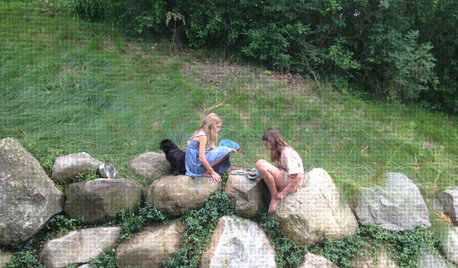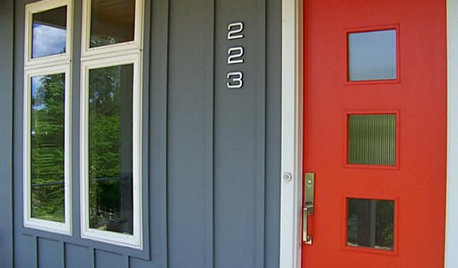Tomato leaves turning bright yellow
heartsy
16 years ago
Related Stories

LIFETurn Off the Video Games and Turn On Your Kid's Creativity
Going nuts planning summer activities? Kids overdosing on screen time? It may be time to foster more self-directed play
Full Story
EDIBLE GARDENSSummer Crops: How to Grow Tomatoes
Plant tomato seedlings in spring for one of the best tastes of summer, fresh from your backyard
Full Story
COLOR10 Reasons to Make a Splash With Tomato Red
You won’t duck at these tomatoes. See how bold red shades can play up architecture, light up a dark spot and add drama
Full Story
DECORATING GUIDES9 Easy Ways to Decorate With Autumn Leaves
Give your home a burst of color that can be used Halloween through Thanksgiving
Full Story
FALL GARDENING5 Ways to Put Fall Leaves to Work in Your Garden
Improve your soil and yard the organic way with a valuable garden booster that grows on trees
Full Story
GARDENING GUIDESWhat's Wrong With My Plant? Leaves Often Hold the Clues
Learn how to identify common plant ailments by reading their leaves
Full Story
LAUNDRY ROOMSRoom of the Day: The Laundry Room No One Wants to Leave
The Hardworking Home: Ocean views, vaulted ceilings and extensive counter and storage space make this hub a joy to work in
Full Story
CURB APPEAL5 Bright Palettes for Front Doors
Splash bold green, blue, orange or red on your front door, then balance it with a more restrained hue on the rest of the house
Full Story
HOUZZ TOURSMy Houzz: Duplex Now a Bright and Spacious Single-Family Home
An open-concept design turns small, dark rooms into a contemporary space for a growing family in Montreal
Full Story
FRONT DOOR COLORSFront and Center Color: When to Paint Your Door Bright Red
Welcoming and intense, a red front door kicks up a home's entryway and is impossible to miss
Full StorySponsored
Most Skilled Home Improvement Specialists in Franklin County
More Discussions







tomatomike
jbann23
Related Professionals
Manorville Landscape Architects & Landscape Designers · Sand Springs Landscape Architects & Landscape Designers · Signal Hill Landscape Architects & Landscape Designers · Towson Landscape Architects & Landscape Designers · Live Oak Landscape Contractors · Pleasanton Landscape Contractors · Webster Groves Landscape Contractors · Gainesville General Contractors · Lake Forest Park General Contractors · Mashpee General Contractors · New Baltimore General Contractors · Fort Myers Decks, Patios & Outdoor Enclosures · San Diego Decks, Patios & Outdoor Enclosures · Spokane Decks, Patios & Outdoor Enclosures · West Chicago Decks, Patios & Outdoor Enclosurescarolyn137
tomatomike
HoosierCheroKee
carolyn137
HoosierCheroKee
carolyn137
digdirt2
carolyn137
digdirt2
HoosierCheroKee
tomatomike
digdirt2
genern
HoosierCheroKee